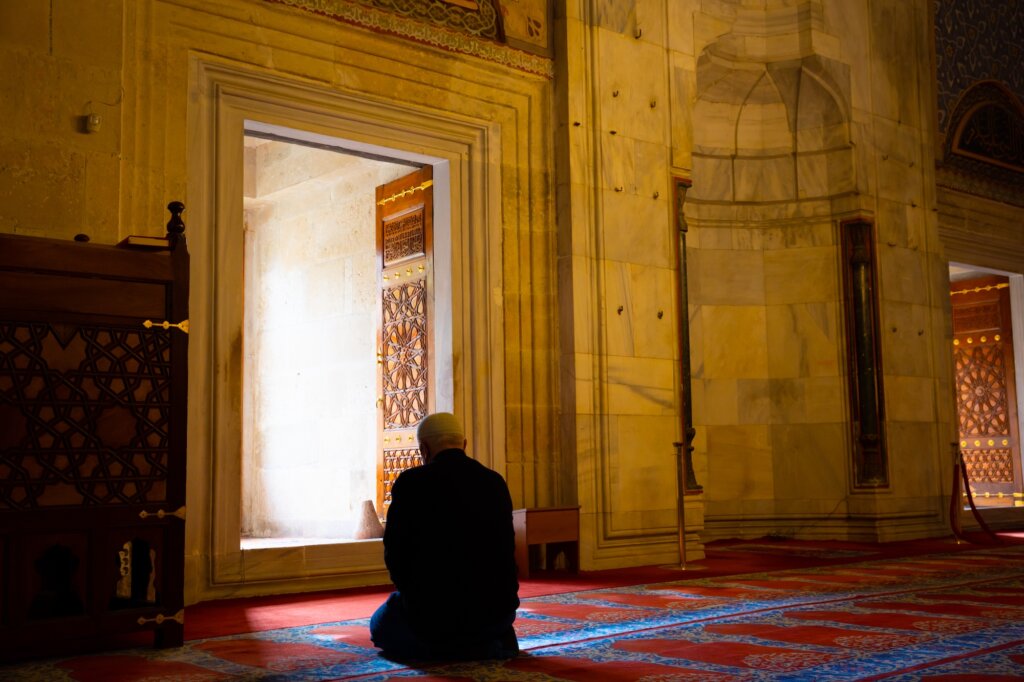Some Curious Facts About Fasting


Reviewed and approved by the psychologist Sergio De Dios González
It’s likely that fasting has been practiced since prehistoric times. In fact, almost all cultures of the world have some special occasion when they stop eating or drinking as an act of homage to their gods.
However, today, fasting is quite common all over the world, especially for health reasons, aesthetics, or both. In particular, intermittent fasting has become extremely popular. Indeed, most of the studies conducted in this regard suggest that it has some positive effects on health.
As a matter of fact, many people report improvements in their moods and health thanks to fasting. Obviously, willpower is required to go without food, so it’s hardly surprising that a fast generates emotional well-being in those who carry them out. Here are some curious facts about fasting.
“Fasting is nourishment for the soul, you see, and just as bodily nourishment fattens the body, so fasting invigorates the soul, provides it with nimble wings, lifts it on high, enables it to contemplate things that are above, and renders it superior to the pleasures and attractions of this present life.”
-St John of Chrysostom-
Fasting throughout history

There’s a mystical and religious origin to fasting. In fact, there are references to this practice in the oldest books of Judaism, Taoism, Hinduism, and Jainism. In the Bible, there are more than 300 passages that mention the subject. Moreover, in many ancient cultures, shamans have the custom of fasting before performing their rituals.
The Normans used to fast before going into battle as they considered it a way of facing death with a purified body and spirit. The Aryans fasted one day a week. While some North American Indians fasted to ward off catastrophes or make their land more fertile.
The Aztecs and the Incas fasted because they considered it an essential condition to come into contact with their gods. Socrates and Plato were also habitual fasters. It’s said that they periodically stopped eating for ten continuous days. In addition, the philosopher, Pythagoras, demanded that all those who entered his school must fast for a day.
Professional fasters
There was a time when fasting became a really good business. Those who profited from this were characters known as hunger artists or starvation artists. The most famous of them was Giovanni Succi. He was an Italian who made his fortune performing a show of endurance in the streets of Buenos Aires. However, many saw him as a charlatan.
His first feat was to remain locked in a cage for 30 days, in the San Martín theater, without eating. He only drank water. People had to pay to see him. In fact, it’s said that, in total, more than 47,000 spectators paid to see him. Apparently, local restaurant owners tried to tempt him to break his voluntary fast, but they were unsuccessful.
There were also other hunger artists like Succi around at the end of the 19th century and the beginning of the 20th. For instance, Henry S. Tanner completed a fast of 44 days which made him a millionaire in the US, thanks to the money he raised for his show. Interstingly, many scientists began to study these types of characters and thus obtained the first data on the effects of fasting.
The most famous hunger strikes

Undoubtedly, most people fast for religious or health reasons. However, not eating food has also been used as a protest against injustice or in order to obtain something in return. These are known as hunger strikes or political fasting.
One of the leaders who used the hunger strike as a systematic tool was Mahatma Gandhi. In total, he fasted 17 times. Each one lasted between seven and 24 days. Just ten days before his death, he carried out his last fast with the aim of promoting harmony between Hindus and Muslims.
The longest hunger strike in history was led by Irom Sharmila. She was a human rights activist who began fasting in 2000 and ended in 2016. Her goal was to protest against the death of ten civilians at the hands of the Indian army.
When she stopped eating, she was accused of the crime of attempted suicide and forced to feed through a nasal tube. It remained that way for almost two decades, with brief interruptions. Once her protest ended, she joined the political struggle in her country. Without a doubt, it was the most dramatic fast in history.
It’s likely that fasting has been practiced since prehistoric times. In fact, almost all cultures of the world have some special occasion when they stop eating or drinking as an act of homage to their gods.
However, today, fasting is quite common all over the world, especially for health reasons, aesthetics, or both. In particular, intermittent fasting has become extremely popular. Indeed, most of the studies conducted in this regard suggest that it has some positive effects on health.
As a matter of fact, many people report improvements in their moods and health thanks to fasting. Obviously, willpower is required to go without food, so it’s hardly surprising that a fast generates emotional well-being in those who carry them out. Here are some curious facts about fasting.
“Fasting is nourishment for the soul, you see, and just as bodily nourishment fattens the body, so fasting invigorates the soul, provides it with nimble wings, lifts it on high, enables it to contemplate things that are above, and renders it superior to the pleasures and attractions of this present life.”
-St John of Chrysostom-
Fasting throughout history

There’s a mystical and religious origin to fasting. In fact, there are references to this practice in the oldest books of Judaism, Taoism, Hinduism, and Jainism. In the Bible, there are more than 300 passages that mention the subject. Moreover, in many ancient cultures, shamans have the custom of fasting before performing their rituals.
The Normans used to fast before going into battle as they considered it a way of facing death with a purified body and spirit. The Aryans fasted one day a week. While some North American Indians fasted to ward off catastrophes or make their land more fertile.
The Aztecs and the Incas fasted because they considered it an essential condition to come into contact with their gods. Socrates and Plato were also habitual fasters. It’s said that they periodically stopped eating for ten continuous days. In addition, the philosopher, Pythagoras, demanded that all those who entered his school must fast for a day.
Professional fasters
There was a time when fasting became a really good business. Those who profited from this were characters known as hunger artists or starvation artists. The most famous of them was Giovanni Succi. He was an Italian who made his fortune performing a show of endurance in the streets of Buenos Aires. However, many saw him as a charlatan.
His first feat was to remain locked in a cage for 30 days, in the San Martín theater, without eating. He only drank water. People had to pay to see him. In fact, it’s said that, in total, more than 47,000 spectators paid to see him. Apparently, local restaurant owners tried to tempt him to break his voluntary fast, but they were unsuccessful.
There were also other hunger artists like Succi around at the end of the 19th century and the beginning of the 20th. For instance, Henry S. Tanner completed a fast of 44 days which made him a millionaire in the US, thanks to the money he raised for his show. Interstingly, many scientists began to study these types of characters and thus obtained the first data on the effects of fasting.
The most famous hunger strikes

Undoubtedly, most people fast for religious or health reasons. However, not eating food has also been used as a protest against injustice or in order to obtain something in return. These are known as hunger strikes or political fasting.
One of the leaders who used the hunger strike as a systematic tool was Mahatma Gandhi. In total, he fasted 17 times. Each one lasted between seven and 24 days. Just ten days before his death, he carried out his last fast with the aim of promoting harmony between Hindus and Muslims.
The longest hunger strike in history was led by Irom Sharmila. She was a human rights activist who began fasting in 2000 and ended in 2016. Her goal was to protest against the death of ten civilians at the hands of the Indian army.
When she stopped eating, she was accused of the crime of attempted suicide and forced to feed through a nasal tube. It remained that way for almost two decades, with brief interruptions. Once her protest ended, she joined the political struggle in her country. Without a doubt, it was the most dramatic fast in history.
All cited sources were thoroughly reviewed by our team to ensure their quality, reliability, currency, and validity. The bibliography of this article was considered reliable and of academic or scientific accuracy.
- Bizkarra, K. (2007). El poder curativo del ayuno. Recuperando un camino olvidado hacia la salud. Bilbao: Desclée de Brouwer.
- Mussi Stoizik, J., Heredia, R., Elías, María., Avena, M., Boarelli, P. (2021). Ayuno Intermitente: ¿mito o realidad? Investigación, Ciencia y Universidad, 5(6). http://repositorio.umaza.edu.ar/handle/00261/2620
- Nieto-Galan, A. (2020). Useful charlatans: Giovanni Succi and Stefano Merlatti’s fasting contest in Paris, 1886. Science in Context, 33(4), 405-422. doi:10.1017/S0269889721000168
This text is provided for informational purposes only and does not replace consultation with a professional. If in doubt, consult your specialist.







